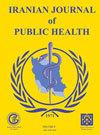The Association between BMI and Body Weight Perception among Children in Turkey: A Cross-Sectional Study
IF 1.4
4区 医学
Q3 Medicine
引用次数: 0
Abstract
Background: There is a complex relationship between body mass index (BMI) and body weight perception. The present study aimed to determine the relationship between BMI and body weight perception among middle-aged children. Methods: This study was cross-sectional, and conducted among 333 children (9-11 yr) from the largest public school in Istanbul, Turkey between Oct 2019 and Jan 2020. BMI was calculated as weight divided by height squared (kg/m2). Body weight perception was determined using a photograph figure rating scale. Data were analyzed using SPSS version 24.0. Results: Overall, 325 children (mean age 10.01 ± 0.99 yr) completed the study. According to the BMI classification, 8.6% of children were severely underweight, 4.9% underweight, 68.0% normal weight, 8.3% overweight, and 10.2% obese. However, 38.8% of the children perceived themselves as overweight, 21.2% as underweight, 20.3% as normal, 10.3% as overweight, and 9.4% as obese. 59.1% of children underestimated their current body weight. On the other hand, 14.2% of children overestimated their current body weight. There were statistical differences between body weight perception and BMI (P<0.001). Conclusion: There was a discrepancy between body weight perception and BMI among middle-aged children. More than half of the children tend to underestimate their actual body weight. Therefore, evaluating the nutritional status of children and learning which body type children perceive can guide the preparation of individual nutrition programs.土耳其儿童体重指数与体重感知之间的关系:一项横断面研究
背景:体重指数(BMI)与体重感知之间存在复杂的关系。本研究旨在确定中年儿童BMI与体重感知之间的关系。
方法:本研究是横断面研究,于2019年10月至2020年1月期间在土耳其伊斯坦布尔最大的公立学校的333名儿童(9-11岁)中进行。BMI的计算方法为体重除以身高的平方(kg/m2)。体重知觉采用照片身材评定量表测定。数据分析采用SPSS 24.0.
结果:总共有325名儿童(平均年龄10.01±0.99岁)完成了研究。根据BMI分类,8.6%的儿童体重严重不足,4.9%的儿童体重不足,68.0%的儿童体重正常,8.3%的儿童超重,10.2%的儿童肥胖。然而,38.8%的孩子认为自己超重,21.2%的孩子认为自己体重不足,20.3%的孩子认为自己正常,10.3%的孩子认为自己超重,9.4%的孩子认为自己肥胖。59.1%的儿童低估了自己目前的体重。另一方面,14.2%的儿童高估了他们目前的体重。体重感知与BMI之间存在统计学差异(P<0.001)。
结论:中年儿童体重知觉与BMI存在差异。超过一半的孩子倾向于低估自己的实际体重。因此,评估儿童的营养状况,了解儿童感知的身体类型,可以指导个人营养计划的准备。
本文章由计算机程序翻译,如有差异,请以英文原文为准。
求助全文
约1分钟内获得全文
求助全文
来源期刊

Iranian Journal of Public Health
医学-公共卫生、环境卫生与职业卫生
CiteScore
2.20
自引率
7.10%
发文量
0
审稿时长
2 months
期刊介绍:
Iranian Journal of Public Health has been continuously published since 1971, as the only Journal in all health domains, with wide distribution (including WHO in Geneva and Cairo) in two languages (English and Persian). From 2001 issue, the Journal is published only in English language. During the last 41 years more than 2000 scientific research papers, results of health activities, surveys and services, have been published in this Journal. To meet the increasing demand of respected researchers, as of January 2012, the Journal is published monthly. I wish this will assist to promote the level of global knowledge. The main topics that the Journal would welcome are: Bioethics, Disaster and Health, Entomology, Epidemiology, Health and Environment, Health Economics, Health Services, Immunology, Medical Genetics, Mental Health, Microbiology, Nutrition and Food Safety, Occupational Health, Oral Health. We would be very delighted to receive your Original papers, Review Articles, Short communications, Case reports and Scientific Letters to the Editor on the above mentioned research areas.
 求助内容:
求助内容: 应助结果提醒方式:
应助结果提醒方式:


